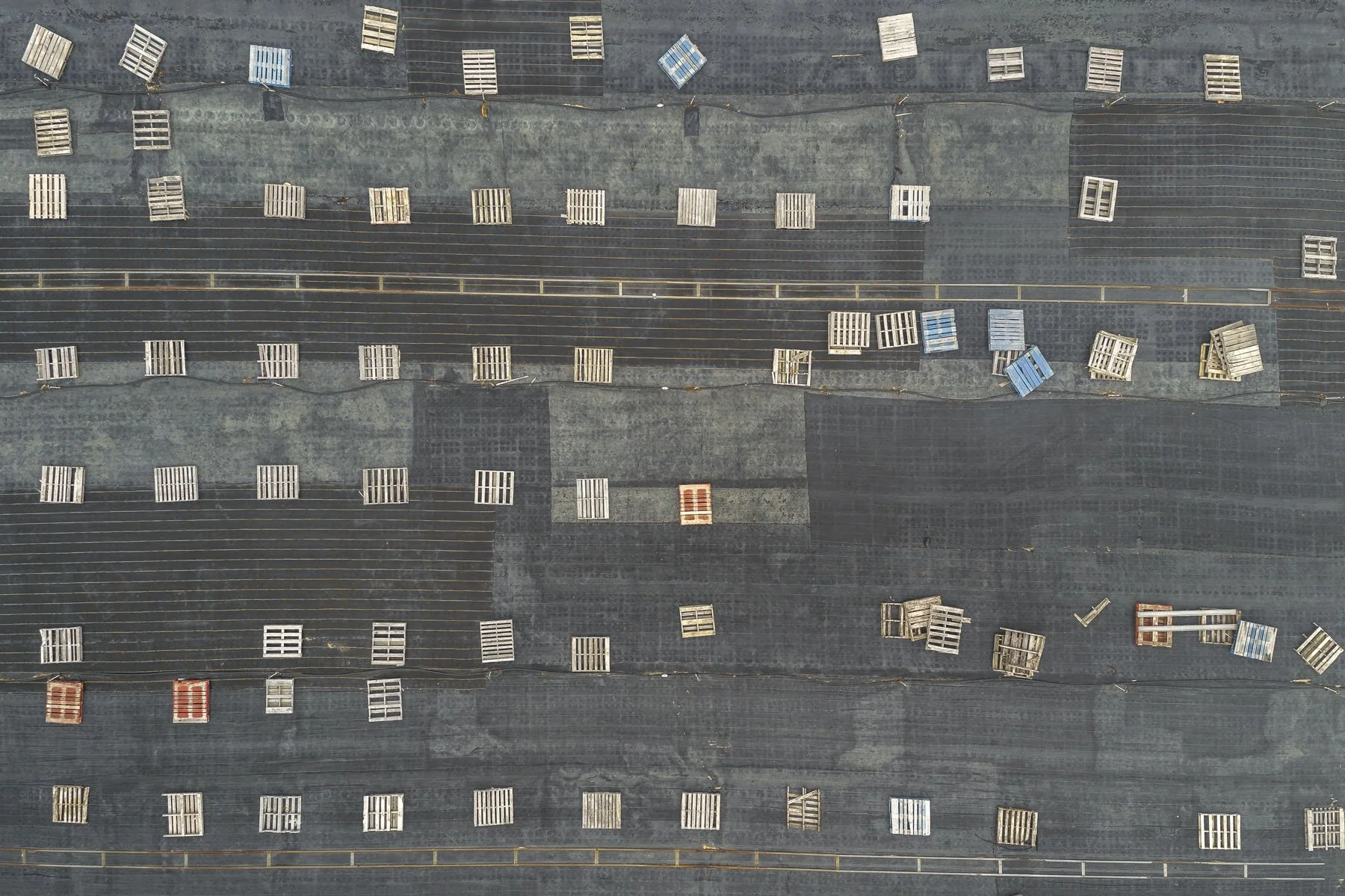Featured Artist
Peter Margonelli Q&A
with Laura Gilbert, Curator of the Peter Margonelli Archive
BAM: After working as an interiors photographer for many years, producing editorial work for magazines like House Beautiful, and Architectural Digest, and commercial work for luxe home design brands such as Waterworks and Donghia, why did Peter turn his attention to drone photography? How did he discover droning?
LG: Peter was a life-long traveler—he explored the world and its cultures with unparalleled enthusiasm, seeing and capturing it all. He even spent time living in India, Italy, and Japan. He enjoyed nothing more than visiting new places and learning the local history. At the same time, he enjoyed electronic gadgets and trying new techniques. He was always playing with new ways to capture the essence of places he visited, and wanted to share his discoveries with others. His interest in drone photography grew out of this combination of interests in undiscovered places and technology, and the desire to seek out new perspectives. His keen eye found engaging graphic patterns and surprising beauty in these decaying industrial sites and the natural world.
BAM: Peter was focused on photographing decaying industrial sites such as rooftops, junk yards, train and ship yards, and salt evaporation sites. What do you think fascinated him about these environments? Did his upbringing in an industrial CT town kickstart his interest?
LG: Yes, Peter grew up in Plainville, CT, an old industrial town that had definitely seen better days. Old factories and mills stood crumbling in the time since manufacturing had been curtailed in that area, and they provoked a deep fascination. When he studied film and photography at NYU in the early 1970s, these old industrial sites and buildings often featured in his work. He was curious about history and thought about these sites as windows into bygone eras and fleeting moments in time, just out of our reach. He really had a sense of wonder and empathy for the histories of the people who once occupied these spaces. He called his series of rooftop images “Traces of Existence,” which I feel really sums up the way he saw things.
BAM: All of Peter’s photography exhibits a strong painterly quality, including grid-like or geometric compositions with beautiful colors. Do you think he was attempting to make the work appear as a painting or challenge/tricking the viewer in some way? We know that Peter had a devilish sense of humor!
LG: Peter did love art and enjoyed spending time in galleries and museums. He had a painterly eye and challenged himself to look closely at art and objects, attempting to see things on multiple levels. But I don’t believe that he was attempting to trick the viewer (though I’m sure he enjoyed the surprised reactions to it). No, it was more that he was inviting the viewer to look a bit more closely — to discover new things in an image or appreciate the site or location that he captured in a different way. He understood that each person on this planet is really very tiny and we are in fact are all part of a big adventure. He just wanted his viewers to share and enjoy this unique perspective.
BAM: In thinking about Peter’s legacy, what do you want people to know about Peter and his work?
LG: Ultimately, I think he wanted to invite people in, to encourage them to see things in a new or different light. Peter had a deep curiosity about almost everything, especially other people. He loved connecting with people of all kinds from every part of the world. Meeting people, creating friendships, and having a laugh with friends while droning — together it was the perfect excuse for him to visit far-flung places, to explore and learn new things. He was incredibly outgoing and sociable, and being with new friends and visitors gave him so much enjoyment while fueling his creative process as he conceptualized and created new images. His work is beautiful, painterly, and subtle, and masterfully conveys his deep empathy for the people and places he photographs. Maybe it also asks his viewers to find compassion for others, like himself, as well.










